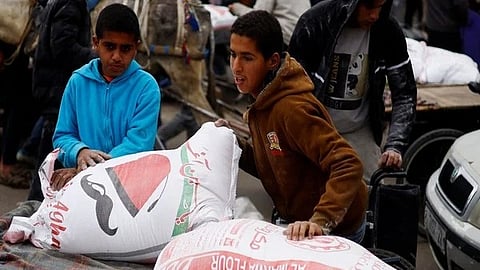

A new study conducted by the United Nations Relief and Works Agency for Palestine Refugees in the Near East (UNRWA) and published in The Lancet reveals that over 54,600 children under 5 in the Gaza Strip are acutely malnourished as of early August 2025, with nearly 12,800 in severe condition.
Between January 2024 and mid-August 2025, aid restrictions tied to Israel’s ongoing war on the Gaza Strip have drastically reduced access to food, water, medical supplies, and other essentials. This has contributed to a rise in acute “wasting”, a life-threatening form of malnutrition, especially among very young children.
The study screened nearly 220,000 children aged 6 months to under 5 years, approximately two-thirds of Gaza’s preschool population. Rates of acute malnutrition surged to 15.8 per cent in August 2025 after an 11-week blockade intensified shortages; earlier in the year, during more open aid conditions, the rate was lower.
Health experts warn that acute malnutrition undermines immune function, increases vulnerability to diseases, and could lead to death if untreated. Treatment often involves therapeutic foods and sometimes hospitalisation.
Although there was a temporary improvement during a six-week ceasefire in early 2025 when aid access increased, conditions worsened again under renewed restrictions.
Gaza’s Health Ministry reports that 461 deaths, including 157 children, have resulted from malnutrition complications since the war began, most in 2025. Hospitals are overwhelmed, and therapeutic food is critically short.
Humanitarian agencies are calling for immediate, uninterrupted aid delivery to prevent further child deaths and irreversible health damage. Without it, child survival and long-term development are at grave risk.
